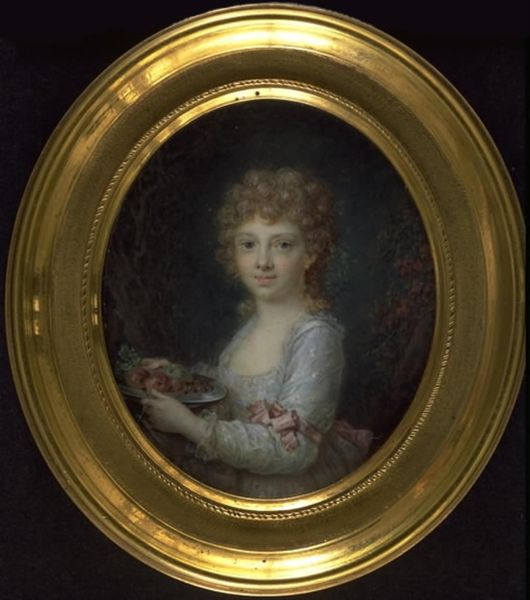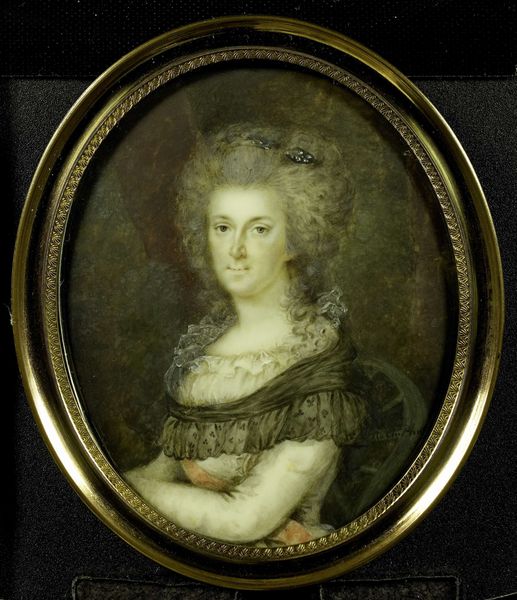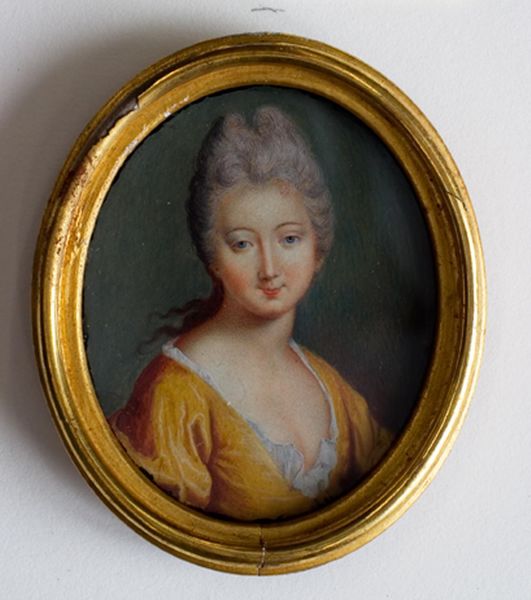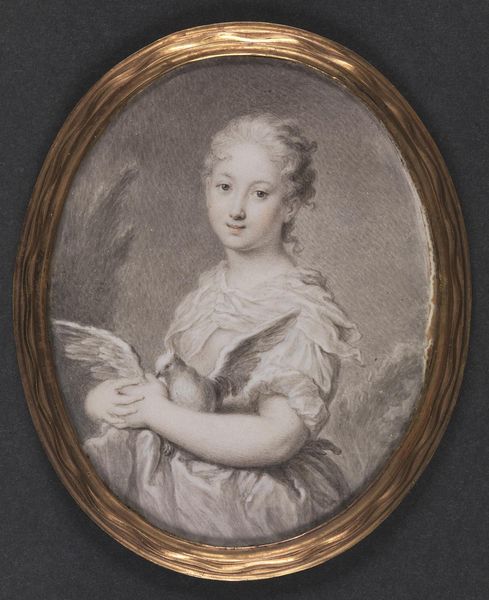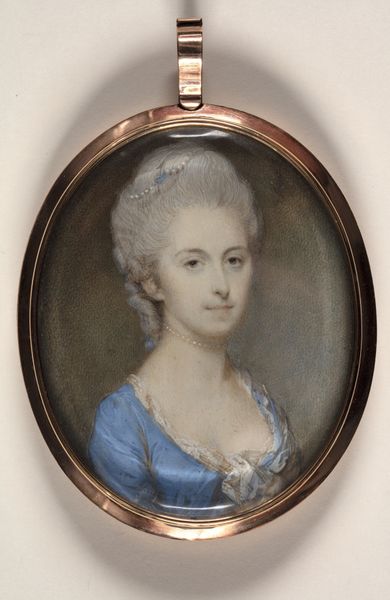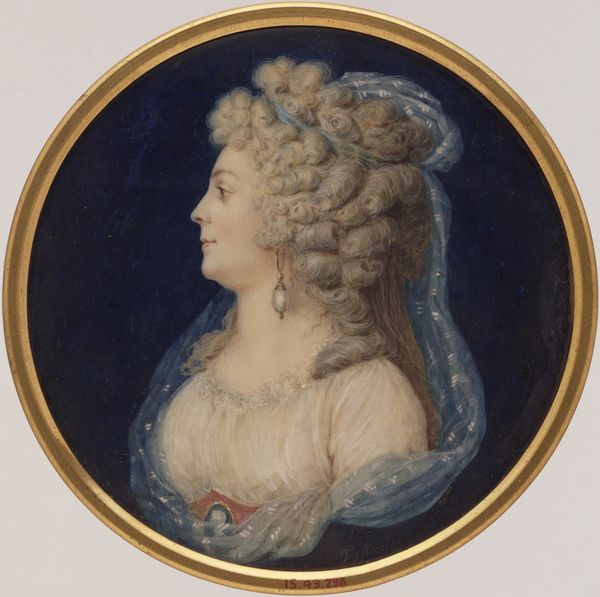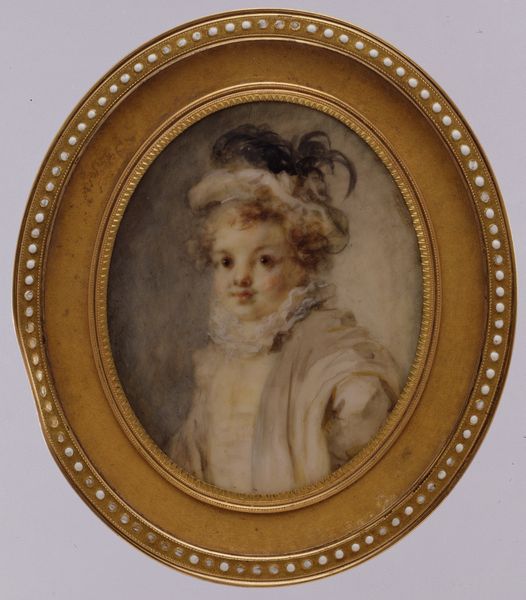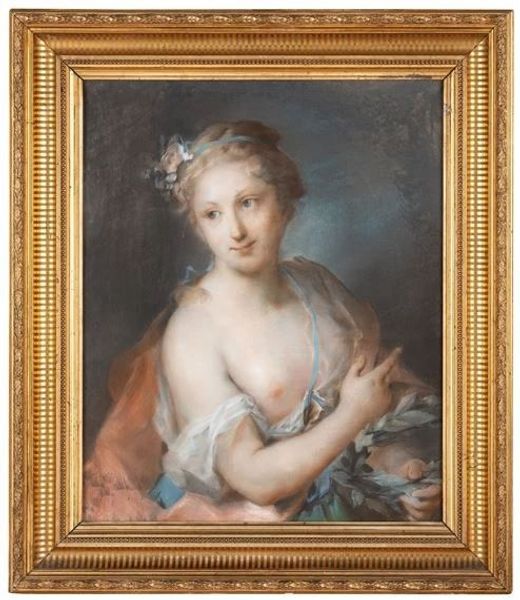
Dimensions: 7.2 cm (None) (None)
Curator: Good morning. Today we’re looking at a work titled “Ung dame med blottet barm”, which translates to “Young lady with bare bosom.” Painted between 1756 and 1804, it’s attributed to Cornelius Høyer and currently resides here at the SMK. Editor: My initial reaction? An interesting composition with a slightly unsettling softness. The hazy background and almost luminous skin create a dreamlike, yet intensely present quality. Curator: The context is fascinating. During the late 18th century, artists were navigating a changing social landscape. Consider the rise of the bourgeoisie, demanding new subjects and styles. This portrait speaks, in some ways, to evolving representations of women. Editor: I agree about the representation; structurally, look at the use of light. Notice how the artist renders a palpable softness using only a focused set of shades to generate depth in an otherwise small portrait. It’s a masterful manipulation. Curator: And the implications of the bare bosom should not be overlooked; This boldness certainly invited scrutiny. One must acknowledge the politics inherent in depicting the female form in such a way, which then influenced viewers to take sides on what women represent. Editor: Yet, this is not overtly sexual, or predatory. Her gaze doesn’t invite the viewer into her private sphere. The flowers feel so deliberately innocent and delicate. Does this suggest an intentional contrast that complicates any clear reading? Curator: I believe it does. The floral garland could symbolize virtue, a carefully constructed counterpoint to the exposed chest. Ultimately, Høyer's choices present more questions than answers. Editor: In essence, this portrait offers much to decipher for a seemingly straightforward image, providing viewers a glimpse into societal norms and the subtle visual language used to express them. Curator: Absolutely. And its presence here reminds us how the museum itself is a product of its time, selectively preserving certain visions of the past. Editor: Precisely, giving artworks such as this continued power as touchstones.
Comments
No comments
Be the first to comment and join the conversation on the ultimate creative platform.

